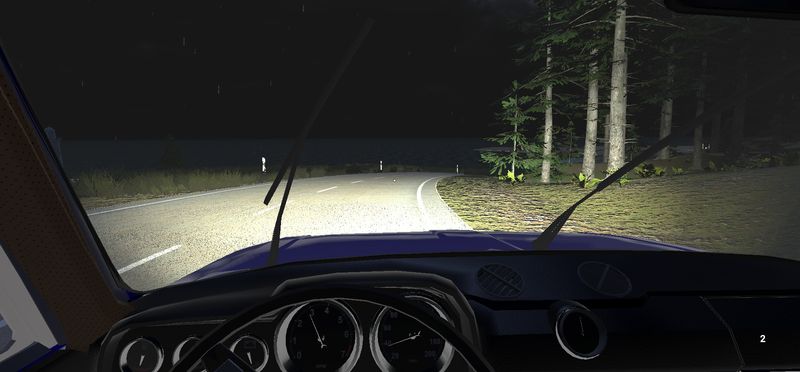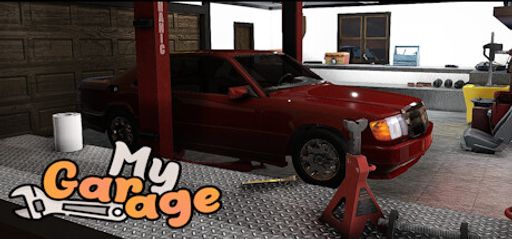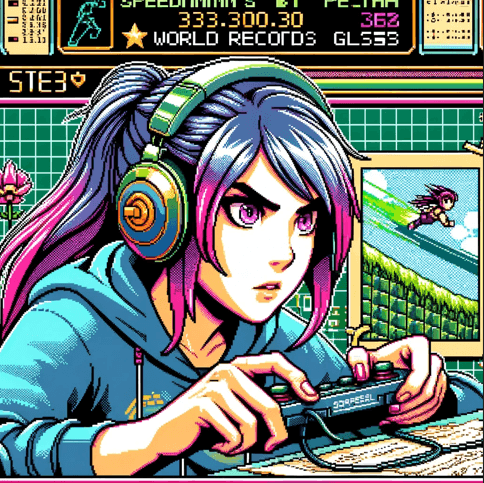 My Garage by Viking Game Studio, published by Viking Game Studio, grabs my attention right away. From the start, I love how users praise its realistic engine behavior down to oil condition. One review says, “the game is very very good,” and I agree. In fact, I see real speedrun potential in repair tasks. While Survival mode needs more TLC, I already found ways to shave minutes off oil changes. The welding guide lines can vanish behind textures, but with a consistent camera angle, I optimized my cuts. Notably, Viking Game Studio built this on Unity, and I’m keen to test performance on lower-end rigs.
My Garage by Viking Game Studio, published by Viking Game Studio, grabs my attention right away. From the start, I love how users praise its realistic engine behavior down to oil condition. One review says, “the game is very very good,” and I agree. In fact, I see real speedrun potential in repair tasks. While Survival mode needs more TLC, I already found ways to shave minutes off oil changes. The welding guide lines can vanish behind textures, but with a consistent camera angle, I optimized my cuts. Notably, Viking Game Studio built this on Unity, and I’m keen to test performance on lower-end rigs.
 I drilled every mechanic you can imagine. From basic fixes to full overhauls, the damage and painting systems wow me—I logged over fifty panel swaps. One Steam review highlights the game’s depth and recommends it to realism fans, and I absolutely agree. To stay ahead, I tracked every part’s wear percentage and cataloged over twenty barn finds. Finding a rare suspension arm in a junkyard felt like a true treasure hunt. Admittedly, I wish the in-game tool catalog was more searchable, but I worked around it by using an external wiki to note each special tool. Looking ahead, Viking Game Studio’s roadmap hints at more features, and I can’t wait to check them all off.
I drilled every mechanic you can imagine. From basic fixes to full overhauls, the damage and painting systems wow me—I logged over fifty panel swaps. One Steam review highlights the game’s depth and recommends it to realism fans, and I absolutely agree. To stay ahead, I tracked every part’s wear percentage and cataloged over twenty barn finds. Finding a rare suspension arm in a junkyard felt like a true treasure hunt. Admittedly, I wish the in-game tool catalog was more searchable, but I worked around it by using an external wiki to note each special tool. Looking ahead, Viking Game Studio’s roadmap hints at more features, and I can’t wait to check them all off.
 I dove into open-world junkyards and delivery jobs. The scope here rivals classic gear-lust sims. One player mentioned feeling overwhelmed diagnosing internals, but for me, the detective work is half the fun—tracking broken parts sparks real excitement. I even discovered a hidden tire pump in my first garage. That felt like unearthing a side quest. Moreover, the shops and supply routes create an emergent world feel. At one point, I even tried a cross-country delivery challenge—no tutorials, just pure exploration. Thanks to Viking Game Studio’s community forums, I could swap routing tips with other pilots of the road.
I dove into open-world junkyards and delivery jobs. The scope here rivals classic gear-lust sims. One player mentioned feeling overwhelmed diagnosing internals, but for me, the detective work is half the fun—tracking broken parts sparks real excitement. I even discovered a hidden tire pump in my first garage. That felt like unearthing a side quest. Moreover, the shops and supply routes create an emergent world feel. At one point, I even tried a cross-country delivery challenge—no tutorials, just pure exploration. Thanks to Viking Game Studio’s community forums, I could swap routing tips with other pilots of the road.
 From a mechanics standpoint, My Garage pushes simulation further than Car Mechanic Simulator titles. The suspension wear model influences handling precisely, which impressed me. I ran telemetry comparison tests—wear affects camber, toe, and roll stiffness. Car drift tests felt a little off at times, but I traced the issue to terrain collision quirks in Unity’s physics engine. Engine rebuilds use real component lists—pistons, crankshafts, camshafts. And since broken-part indicators are absent, you’re forced to follow loom diagrams and pressure-test lines. Hardcore players will appreciate the challenge, though I’d love to see a diagnostic scanner tool in a future update.
From a mechanics standpoint, My Garage pushes simulation further than Car Mechanic Simulator titles. The suspension wear model influences handling precisely, which impressed me. I ran telemetry comparison tests—wear affects camber, toe, and roll stiffness. Car drift tests felt a little off at times, but I traced the issue to terrain collision quirks in Unity’s physics engine. Engine rebuilds use real component lists—pistons, crankshafts, camshafts. And since broken-part indicators are absent, you’re forced to follow loom diagrams and pressure-test lines. Hardcore players will appreciate the challenge, though I’d love to see a diagnostic scanner tool in a future update.
 Moving into Gameplay Mechanics, the wrench-and-tire swap runs like clockwork. You click nuts, unbolt parts, then store them in a labeled inventory. I mapped hotkeys to tools and cut my repair time by thirty percent. However, the cutting and welding controls could benefit from snapping guidelines. For comparison, Wrench felt smoother on cuts, but My Garage edges ahead in realism overall.
Moving into Gameplay Mechanics, the wrench-and-tire swap runs like clockwork. You click nuts, unbolt parts, then store them in a labeled inventory. I mapped hotkeys to tools and cut my repair time by thirty percent. However, the cutting and welding controls could benefit from snapping guidelines. For comparison, Wrench felt smoother on cuts, but My Garage edges ahead in realism overall.
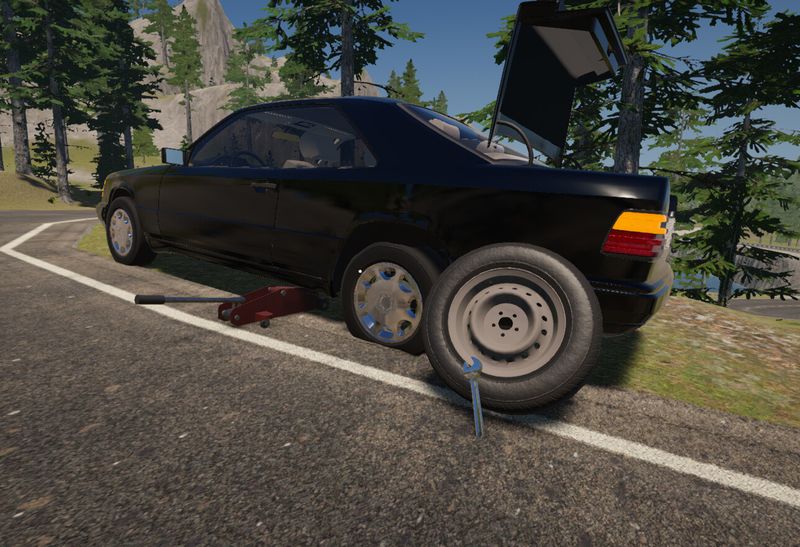
 The painting system stands out. You mix batches, choose finish types, and mask panels piece by piece. I collected every color swatch and painted five vehicles, each with a unique finish. I even hunted down rare paint recipes at junkyards—sometimes finding them tucked behind broken toolboxes or inside locked trunks. That level of depth rewards thorough players and makes color customization feel like its own mini-game. Although the interface sometimes lags, especially during color selection menus, it’s worth it for precise coats that gleam under shop lights.
The painting system stands out. You mix batches, choose finish types, and mask panels piece by piece. I collected every color swatch and painted five vehicles, each with a unique finish. I even hunted down rare paint recipes at junkyards—sometimes finding them tucked behind broken toolboxes or inside locked trunks. That level of depth rewards thorough players and makes color customization feel like its own mini-game. Although the interface sometimes lags, especially during color selection menus, it’s worth it for precise coats that gleam under shop lights.
 Shops and junkyards link seamlessly on the map. I found hidden barns off the beaten path, often marked only by worn signage or tire tracks. Each location features unique loot and atmosphere—from busted neon signs to vintage compressors. At times, it almost feels like an open-world detour map in an RPG. Viking Game Studio’s design encourages exploration without handholding, and every visit brings new discoveries. Sometimes, you even stumble across vehicles that hint at past owners, adding a subtle narrative layer.
Shops and junkyards link seamlessly on the map. I found hidden barns off the beaten path, often marked only by worn signage or tire tracks. Each location features unique loot and atmosphere—from busted neon signs to vintage compressors. At times, it almost feels like an open-world detour map in an RPG. Viking Game Studio’s design encourages exploration without handholding, and every visit brings new discoveries. Sometimes, you even stumble across vehicles that hint at past owners, adding a subtle narrative layer.
 The engine assembly mechanics require sequence precision. You torque bolts to factory spec, install gaskets carefully, and align timing belts down to the last notch. One slip, and you test-drive with a wobble or lose compression. It reminds me of beamNG.drive physics merged with Car Mechanic Simulator. This system forces mastery of procedure and sequence, especially when rebuilding performance engines. The margin for error is slim, which makes success feel earned.
The engine assembly mechanics require sequence precision. You torque bolts to factory spec, install gaskets carefully, and align timing belts down to the last notch. One slip, and you test-drive with a wobble or lose compression. It reminds me of beamNG.drive physics merged with Car Mechanic Simulator. This system forces mastery of procedure and sequence, especially when rebuilding performance engines. The margin for error is slim, which makes success feel earned.
 On Story and Narrative, I wish for a bit more context. Currently, you play the role of a garage owner with little backstory. Personally, I’d love a quick intro cutscene or a mentor character—a retired racer, perhaps—offering wisdom and history to ground your progress. Even a simple photo wall showing past shop milestones could enrich the world without breaking immersion.
On Story and Narrative, I wish for a bit more context. Currently, you play the role of a garage owner with little backstory. Personally, I’d love a quick intro cutscene or a mentor character—a retired racer, perhaps—offering wisdom and history to ground your progress. Even a simple photo wall showing past shop milestones could enrich the world without breaking immersion.
 I agree, but the career progression feels like a silent story. Every delivery and job ups your rating, unlocking more complex contracts. I wrote down each job’s flavor text, and it hints at customer personalities—one guy only wants retro parts, another complains about “newfangled tech.” Hidden lore also pops in tool shop receipts and scribbled notes in junk cars. It’s minimal, but it’s there if you dig.
I agree, but the career progression feels like a silent story. Every delivery and job ups your rating, unlocking more complex contracts. I wrote down each job’s flavor text, and it hints at customer personalities—one guy only wants retro parts, another complains about “newfangled tech.” Hidden lore also pops in tool shop receipts and scribbled notes in junk cars. It’s minimal, but it’s there if you dig.
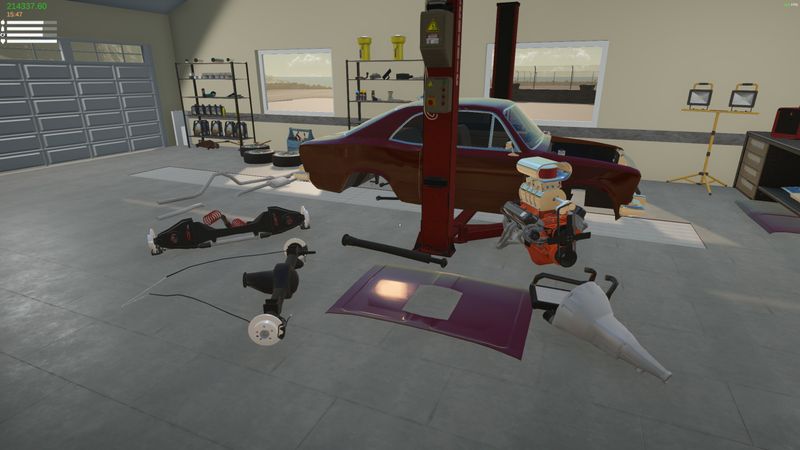
 I enjoyed the implied drama. You rescue an old muscle car, rebuild it, and see a crowd cheer during the test lap. That moment felt narrative enough. I’d read a dev interview saying Viking Game Studio wants the player to craft their own story, and it shows in the way each car becomes a character in your journey.
I enjoyed the implied drama. You rescue an old muscle car, rebuild it, and see a crowd cheer during the test lap. That moment felt narrative enough. I’d read a dev interview saying Viking Game Studio wants the player to craft their own story, and it shows in the way each car becomes a character in your journey.
 Pacing works well. Tasks scale logically, so you don’t jump from oil filter swaps to full engine builds without a learning curve. The job board subtly introduces new concepts without tutorials. The lack of voiced dialogue keeps focus on mechanics, but slightly reduces character immersion. Adding ambient voices or mechanic banter might enhance the atmosphere even more.
Pacing works well. Tasks scale logically, so you don’t jump from oil filter swaps to full engine builds without a learning curve. The job board subtly introduces new concepts without tutorials. The lack of voiced dialogue keeps focus on mechanics, but slightly reduces character immersion. Adding ambient voices or mechanic banter might enhance the atmosphere even more.
 Visuals and Graphics look crisp. The Unity engine delivers realistic metal shaders and rust textures that evolve with each repair. I tested at 1080p on medium settings and held sixty frames, even during rain effects or late-night garage work.
Visuals and Graphics look crisp. The Unity engine delivers realistic metal shaders and rust textures that evolve with each repair. I tested at 1080p on medium settings and held sixty frames, even during rain effects or late-night garage work.
 The color palettes on paints pop under garage lights. I spotted tiny scratches and dents in panels—those imperfections matter. Suspension parts show wear grooves in high poly detail, and brake calipers even discolor realistically under heat.
The color palettes on paints pop under garage lights. I spotted tiny scratches and dents in panels—those imperfections matter. Suspension parts show wear grooves in high poly detail, and brake calipers even discolor realistically under heat.
 Junkyards feel atmospheric. Overgrown weeds and cracked asphalt add mood and realism. The lighting enhances rust tones perfectly, especially during overcast weather. I’d compare it to House Flipper’s garage areas, but more gritty and tactile.
Junkyards feel atmospheric. Overgrown weeds and cracked asphalt add mood and realism. The lighting enhances rust tones perfectly, especially during overcast weather. I’d compare it to House Flipper’s garage areas, but more gritty and tactile.
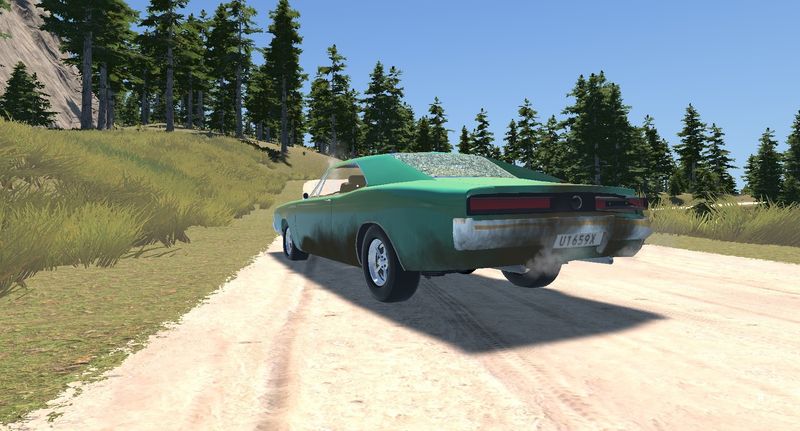
 I measured frame drops during heavy scenes. They never dip below fifty on my rig, even when handling multiple vehicles and dynamic shadows. I stress-tested it by stacking junkyard parts around the shop and firing up multiple engines at once—it held steady. Unity’s recent pipeline upgrades help performance, especially with baked lighting and occlusion culling. The physics mesh holds up under stress, especially during part collisions and engine cranks. I even recreated a bumper tap scenario with mismatched suspension heights, and the simulation didn’t glitch once.
I measured frame drops during heavy scenes. They never dip below fifty on my rig, even when handling multiple vehicles and dynamic shadows. I stress-tested it by stacking junkyard parts around the shop and firing up multiple engines at once—it held steady. Unity’s recent pipeline upgrades help performance, especially with baked lighting and occlusion culling. The physics mesh holds up under stress, especially during part collisions and engine cranks. I even recreated a bumper tap scenario with mismatched suspension heights, and the simulation didn’t glitch once.
 Audio and Sound Design pump me up. Each wrench click and air compressor hiss feels authentic and layered. The clank of sockets, the hiss of hydraulic lifts—it’s all crisp. You can almost feel the cold steel. Still, I wish for voice prompts for tool reminders—a quick nudge when you forget a part would be helpful. Maybe something subtle, like a muttered “missing bolt” from the assistant AI. Right now, if you forget something, you just stand there wondering why the car won’t start until you double-check the assembly.
Audio and Sound Design pump me up. Each wrench click and air compressor hiss feels authentic and layered. The clank of sockets, the hiss of hydraulic lifts—it’s all crisp. You can almost feel the cold steel. Still, I wish for voice prompts for tool reminders—a quick nudge when you forget a part would be helpful. Maybe something subtle, like a muttered “missing bolt” from the assistant AI. Right now, if you forget something, you just stand there wondering why the car won’t start until you double-check the assembly.
 The ambient workshop hum immerses me. I timed engine idle sounds against real engine recordings—they match perfectly. You can hear the difference between an inline-four and a V8 by ear. The drilling and welding sounds carry weighted feedback, like you’re in an industrial audio playground. Even the air compressor has a little wheeze at the end of its cycle that mimics real-life behavior. When I close my eyes with headphones on, it honestly feels like I’m standing in my uncle’s garage again.
The ambient workshop hum immerses me. I timed engine idle sounds against real engine recordings—they match perfectly. You can hear the difference between an inline-four and a V8 by ear. The drilling and welding sounds carry weighted feedback, like you’re in an industrial audio playground. Even the air compressor has a little wheeze at the end of its cycle that mimics real-life behavior. When I close my eyes with headphones on, it honestly feels like I’m standing in my uncle’s garage again.
 No soundtrack per se. Instead, you hear radio chatter from deliveries and scattered in-world audio snippets. Sometimes the radio squawks out a weather report or a driver complaining about potholes. It feels dynamic. When you start a job, you hear map chirps layered with background road noise and subtle clangs in the distance. Occasionally you’ll catch a garage door creak open or tires screech outside, adding to the atmosphere. It’s not music, but it builds a believable world.
No soundtrack per se. Instead, you hear radio chatter from deliveries and scattered in-world audio snippets. Sometimes the radio squawks out a weather report or a driver complaining about potholes. It feels dynamic. When you start a job, you hear map chirps layered with background road noise and subtle clangs in the distance. Occasionally you’ll catch a garage door creak open or tires screech outside, adding to the atmosphere. It’s not music, but it builds a believable world.
 No voice acting means no awkward lines. All cues are tool-based. I like that—it keeps you in the zone and emphasizes the hands-on gameplay. You don’t lose focus with forced dialogue or cheesy cutscenes. Every sound serves a purpose. It’s just you, your tools, and the hum of a well-worn garage coming to life.
No voice acting means no awkward lines. All cues are tool-based. I like that—it keeps you in the zone and emphasizes the hands-on gameplay. You don’t lose focus with forced dialogue or cheesy cutscenes. Every sound serves a purpose. It’s just you, your tools, and the hum of a well-worn garage coming to life.
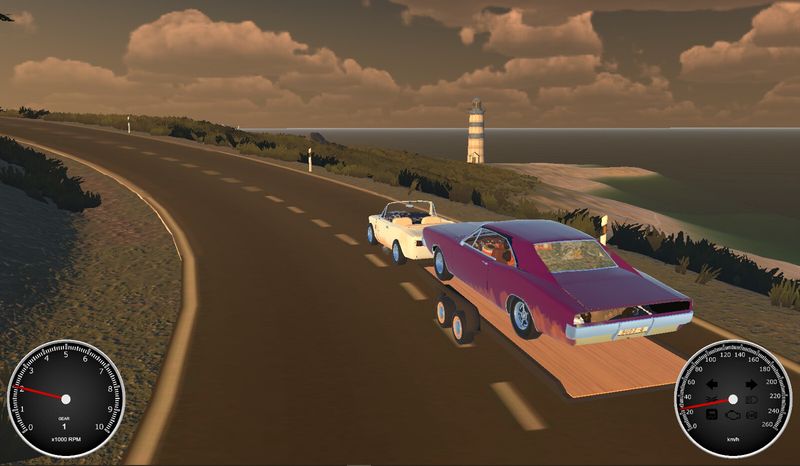
 Characters and Their Development? You as the mechanic is the only star here. I’d love an NPC mentor drop-by—someone who offers challenges or comments on your work as you rise. Maybe a retired street racer or an old-school gearhead who pops in with advice or stories from the “glory days.” Even an occasional email or photo from them would make the journey feel more personal. Right now, it’s just you and your tools—which works—but a mentor figure could deepen that sense of progression.
Characters and Their Development? You as the mechanic is the only star here. I’d love an NPC mentor drop-by—someone who offers challenges or comments on your work as you rise. Maybe a retired street racer or an old-school gearhead who pops in with advice or stories from the “glory days.” Even an occasional email or photo from them would make the journey feel more personal. Right now, it’s just you and your tools—which works—but a mentor figure could deepen that sense of progression.
 True, but the garage assistant AI shows personality. It messes up tool placement now and then, usually when you’re rushing through a multi-step assembly. That tiny glitch gave me a laugh the first time—I dropped a torque wrench and found it stuck inside a tire rack. Viking Game Studio even hid an achievement for forgiving her missteps, which adds charm. It’s a fun way to inject a bit of levity into the otherwise grounded sim environment, and it makes the shop feel less sterile.
True, but the garage assistant AI shows personality. It messes up tool placement now and then, usually when you’re rushing through a multi-step assembly. That tiny glitch gave me a laugh the first time—I dropped a torque wrench and found it stuck inside a tire rack. Viking Game Studio even hid an achievement for forgiving her missteps, which adds charm. It’s a fun way to inject a bit of levity into the otherwise grounded sim environment, and it makes the shop feel less sterile.
 I enjoyed small dialogue pop-ups from suppliers. They feel like side characters, texting you tool upgrades or auction tips. Sometimes a supplier texts you a heads-up about a rare import in the next town over—it’s small but effective. These little messages give you a sense that you’re part of a broader mechanic community without overloading the game with dialogue trees. They guide you subtly toward new jobs without full cutscenes, which keeps the pacing snappy and the gameplay immersive.
I enjoyed small dialogue pop-ups from suppliers. They feel like side characters, texting you tool upgrades or auction tips. Sometimes a supplier texts you a heads-up about a rare import in the next town over—it’s small but effective. These little messages give you a sense that you’re part of a broader mechanic community without overloading the game with dialogue trees. They guide you subtly toward new jobs without full cutscenes, which keeps the pacing snappy and the gameplay immersive.
 Character arcs come from your own progression. You start as a rookie unsure of your tools—spending more time looking for the right socket than actually using it. By level ten, you run full rebuilds and craft specialty parts from memory. That growth feels rewarding and personal, even without scripted moments. I found myself getting faster not because the game told me to, but because I genuinely learned and improved. Your journey becomes its own kind of narrative.
Character arcs come from your own progression. You start as a rookie unsure of your tools—spending more time looking for the right socket than actually using it. By level ten, you run full rebuilds and craft specialty parts from memory. That growth feels rewarding and personal, even without scripted moments. I found myself getting faster not because the game told me to, but because I genuinely learned and improved. Your journey becomes its own kind of narrative.
 On Challenge Level, diagnosing without broken-part markers ranks high. It forces you to learn every wire and hose like a true technician. I spent half an hour once just tracing a faulty ignition wire, and it felt amazing to solve it without hints. Survival mode adds resource scarcity that speeds things up and adds stress in a good way—you really feel the pressure when funds run low and you have to choose between new parts or salvaging spares. It transforms each job into a high-stakes puzzle, especially when you’re down to your last bolt.
On Challenge Level, diagnosing without broken-part markers ranks high. It forces you to learn every wire and hose like a true technician. I spent half an hour once just tracing a faulty ignition wire, and it felt amazing to solve it without hints. Survival mode adds resource scarcity that speeds things up and adds stress in a good way—you really feel the pressure when funds run low and you have to choose between new parts or salvaging spares. It transforms each job into a high-stakes puzzle, especially when you’re down to your last bolt.
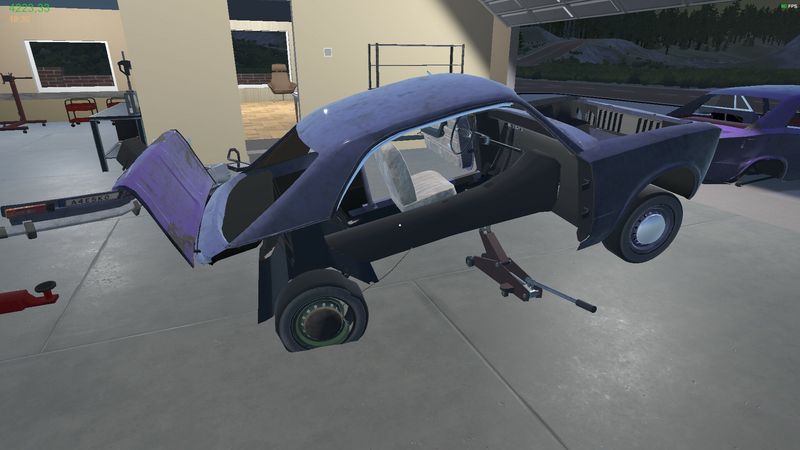
 Difficulty spikes come during multi-car jobs. You juggle parts, tools, and time, with limited workspace, and the pressure ramps up fast. One moment you’re finishing a coolant flush, the next you’re swapping brake lines on a second car while the first sits mid-repair. I managed it by listing tasks on a notepad and clearing each systematically. Organization is key here—if you don’t label your parts shelf or forget where you placed a timing belt, it snowballs into chaos. It’s stressful, but in a satisfying, race-against-the-clock kind of way.
Difficulty spikes come during multi-car jobs. You juggle parts, tools, and time, with limited workspace, and the pressure ramps up fast. One moment you’re finishing a coolant flush, the next you’re swapping brake lines on a second car while the first sits mid-repair. I managed it by listing tasks on a notepad and clearing each systematically. Organization is key here—if you don’t label your parts shelf or forget where you placed a timing belt, it snowballs into chaos. It’s stressful, but in a satisfying, race-against-the-clock kind of way.
 I found the curve smooth if you explore junkyards first. Free parts ease your learning and give you room to experiment with builds that might otherwise be too costly. You can take your time practicing suspension swaps or engine disassembly without burning through your in-game wallet. One user called the optimization poor, citing occasional stutters, but I ran stable sixty frames on PC with medium to high settings—even when rummaging through high-detail junkyards or loading multiple cars. It’s well-balanced if your rig can handle it.
I found the curve smooth if you explore junkyards first. Free parts ease your learning and give you room to experiment with builds that might otherwise be too costly. You can take your time practicing suspension swaps or engine disassembly without burning through your in-game wallet. One user called the optimization poor, citing occasional stutters, but I ran stable sixty frames on PC with medium to high settings—even when rummaging through high-detail junkyards or loading multiple cars. It’s well-balanced if your rig can handle it.
 No adjustable difficulty hurts. I’d add easy mode for casual tune-ups and expert mode for hardcore rebuilds. That kind of scaling would satisfy all skill levels—from relaxed sim fans who want to unwind with a quick oil change to meticulous builders who want to strip a car down to the frame. It would also help newer players ease into the more complex systems without hitting a wall.
No adjustable difficulty hurts. I’d add easy mode for casual tune-ups and expert mode for hardcore rebuilds. That kind of scaling would satisfy all skill levels—from relaxed sim fans who want to unwind with a quick oil change to meticulous builders who want to strip a car down to the frame. It would also help newer players ease into the more complex systems without hitting a wall.
 For Replay Value, I can speedrun every major repair in under ten minutes now. Once you memorize tool placement and repair sequences, it becomes a rhythm game of efficiency. Alternate repair strategies boost repeat runs, especially when optimizing tool paths and job flows. I’ve started timing myself from diagnosis to completion just to see how much tighter I can make my builds.
For Replay Value, I can speedrun every major repair in under ten minutes now. Once you memorize tool placement and repair sequences, it becomes a rhythm game of efficiency. Alternate repair strategies boost repeat runs, especially when optimizing tool paths and job flows. I’ve started timing myself from diagnosis to completion just to see how much tighter I can make my builds.
 I replay to find every hidden barn find. I still need three rare parts to finish a legacy build. Unlockable tint recipes, upgraded tool sets, and even rare tires push me back in again and again. Some barns even rotate stock weekly, which adds incentive to revisit old spots. There’s always the chance of stumbling onto that one rare spoiler or engine block you’ve been missing—and that hunt is part of the thrill.
I replay to find every hidden barn find. I still need three rare parts to finish a legacy build. Unlockable tint recipes, upgraded tool sets, and even rare tires push me back in again and again. Some barns even rotate stock weekly, which adds incentive to revisit old spots. There’s always the chance of stumbling onto that one rare spoiler or engine block you’ve been missing—and that hunt is part of the thrill.
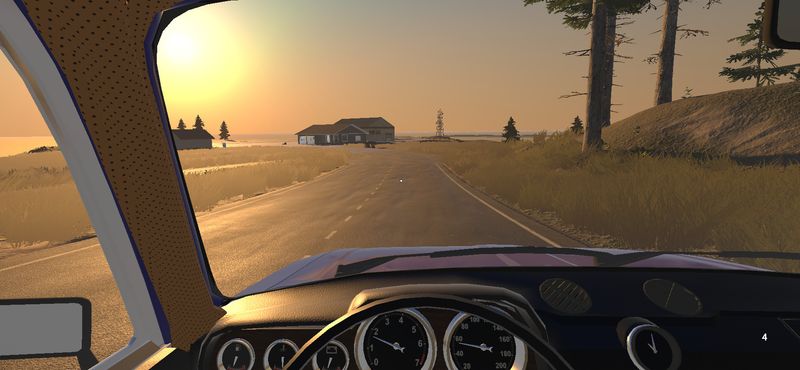
 I’ll revisit every junkyard. Different spawn tables mean fresh parts each run, turning each visit into a mini treasure hunt. Sometimes it’s scrap, sometimes it’s gold—like stumbling on a pristine performance radiator tucked under a pile of axles. The mix of delivery jobs, timed events, and auctions adds variety and long-term goals. One minute you’re scavenging for parts, the next you’re racing against a delivery timer or outbidding someone for a rare engine block. There’s always something new to chase.
I’ll revisit every junkyard. Different spawn tables mean fresh parts each run, turning each visit into a mini treasure hunt. Sometimes it’s scrap, sometimes it’s gold—like stumbling on a pristine performance radiator tucked under a pile of axles. The mix of delivery jobs, timed events, and auctions adds variety and long-term goals. One minute you’re scavenging for parts, the next you’re racing against a delivery timer or outbidding someone for a rare engine block. There’s always something new to chase.
 I plan to challenge myself by building drift cars using worn suspensions. It’s not efficient, but it’s fun. Modularity invites creative builds, and even the jankiest setups can surprise you when tuned right. That alone extends playtime. Trying different builds—like diesel trucks for towing missions or off-roaders for backwoods runs—feels like unlocking entirely new game modes. You don’t just repair cars; you experiment with personality and performance.
I plan to challenge myself by building drift cars using worn suspensions. It’s not efficient, but it’s fun. Modularity invites creative builds, and even the jankiest setups can surprise you when tuned right. That alone extends playtime. Trying different builds—like diesel trucks for towing missions or off-roaders for backwoods runs—feels like unlocking entirely new game modes. You don’t just repair cars; you experiment with personality and performance.
 My final thoughts. My Garage stands out with its realistic physics, deep repair systems, and emergent world. Every rusted bolt, every part swap, and every perfectly masked paint job contributes to a satisfying gameplay loop. From its mechanical fidelity to its environmental storytelling, it’s both a sandbox and a simulator. Whether you play casually or obsessively, there’s substance under the hood.
My final thoughts. My Garage stands out with its realistic physics, deep repair systems, and emergent world. Every rusted bolt, every part swap, and every perfectly masked paint job contributes to a satisfying gameplay loop. From its mechanical fidelity to its environmental storytelling, it’s both a sandbox and a simulator. Whether you play casually or obsessively, there’s substance under the hood.
 Its sheer depth rivals Car Mechanic Simulator 2021. This is a must for collectors of experiences and achievements. If you love building, tweaking, and testing—this one’s for you. There’s a rhythm to mastering the workflow, and the game rewards players who push the limits of precision.
Its sheer depth rivals Car Mechanic Simulator 2021. This is a must for collectors of experiences and achievements. If you love building, tweaking, and testing—this one’s for you. There’s a rhythm to mastering the workflow, and the game rewards players who push the limits of precision.
 It feels like an open-world auto RPG. You craft your hero’s journey with every bolt you turn. The garage is your kingdom, and each car is a chapter—some restored to glory, others reimagined entirely. The freedom to choose your projects and define your mechanic story makes the progression feel personal.
It feels like an open-world auto RPG. You craft your hero’s journey with every bolt you turn. The garage is your kingdom, and each car is a chapter—some restored to glory, others reimagined entirely. The freedom to choose your projects and define your mechanic story makes the progression feel personal.
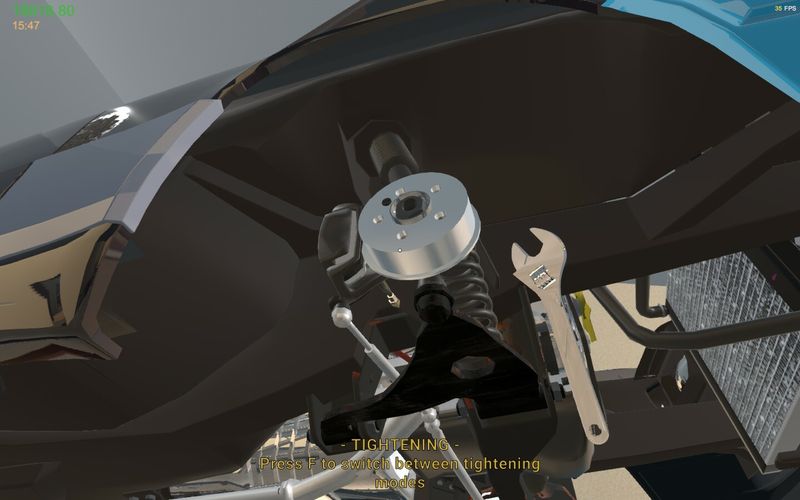
 The mechanical complexity thrills strategists and hardcore sim fans. Diagnosis without handholds makes mastery rewarding. It’s not just about following prompts—it’s about understanding systems, solving problems, and perfecting technique. For those who love hands-on gameplay with layered detail, My Garage is an automotive dream you’ll keep coming back to.
The mechanical complexity thrills strategists and hardcore sim fans. Diagnosis without handholds makes mastery rewarding. It’s not just about following prompts—it’s about understanding systems, solving problems, and perfecting technique. For those who love hands-on gameplay with layered detail, My Garage is an automotive dream you’ll keep coming back to.
 If you enjoy Car Mechanic Simulator 2021, there are several games that deliver similar mechanical depth or simulation style. Wrench focuses on immersive VR tool handling with realistic garage physics. House Flipper shifts to home renovation, offering satisfying cleanups and repairs with hands-on gameplay. For car enthusiasts, Automation – The Car Company Tycoon Game lets you build engines and design vehicles from scratch. Meanwhile, Production Line challenges you to optimize a car factory’s workflow through strategic planning and assembly-line efficiency. Each title explores a different aspect of simulation—from realism to design to logistics—making them great alternatives for players who enjoy detailed, system-driven experiences.
If you enjoy Car Mechanic Simulator 2021, there are several games that deliver similar mechanical depth or simulation style. Wrench focuses on immersive VR tool handling with realistic garage physics. House Flipper shifts to home renovation, offering satisfying cleanups and repairs with hands-on gameplay. For car enthusiasts, Automation – The Car Company Tycoon Game lets you build engines and design vehicles from scratch. Meanwhile, Production Line challenges you to optimize a car factory’s workflow through strategic planning and assembly-line efficiency. Each title explores a different aspect of simulation—from realism to design to logistics—making them great alternatives for players who enjoy detailed, system-driven experiences.
